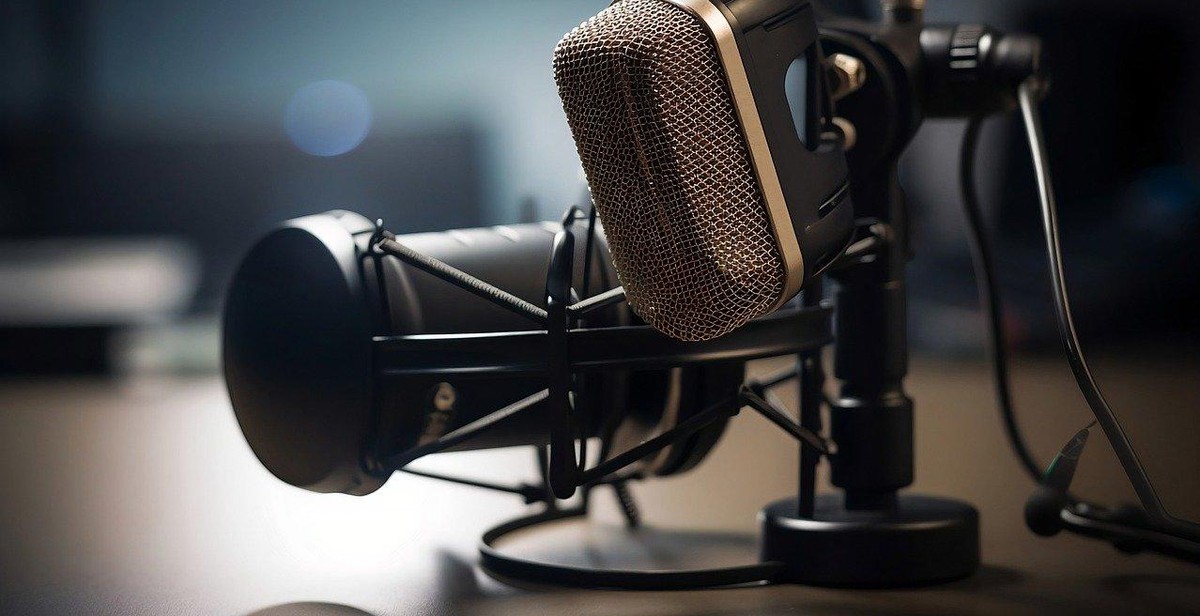How to Start a Successful Podcast: Steps and Tips for Beginners
If you are a fan of podcasts, you may have considered starting your own. Podcasts are an excellent way to communicate with your audience, share your ideas, and connect with like-minded individuals. However, starting a podcast can be a daunting task, especially if you are new to the world of podcasting.
What is a Podcast?
A podcast is a digital audio file that is made available on the internet for download or streaming. Podcasts are usually created as a series, with new episodes released on a regular basis. They cover a wide range of topics, from news and politics to entertainment and lifestyle.
Why Start a Podcast?
There are many reasons why you might want to start a podcast. For one, it can be an excellent way to share your expertise and knowledge with others. It can also be a powerful tool for building your personal brand and establishing yourself as an authority in your field. Additionally, podcasting can be a fun and creative outlet, allowing you to connect with your audience in a unique way.
If you are ready to start your own podcast, this article will provide you with the steps and tips you need to get started. From choosing your topic to promoting your podcast, we will cover everything you need to know to launch a successful podcast.

Step 1: Define Your Podcast Concept
Before you start recording your first episode, it’s important to have a clear concept for your podcast. This will help you stay focused and attract listeners who are interested in your topic. Here are some steps to help you define your podcast concept:
Identify Your Niche
What is your podcast going to be about? It’s important to identify a specific niche or topic that you are passionate about and knowledgeable in. This will help you create content that is valuable and interesting to your target audience.
Determine Your Format
There are many different podcast formats to choose from, including solo shows, interview-style shows, and co-hosted shows. Consider which format will work best for your niche and your personal style.
Choose a Name and Branding
Your podcast name and branding should reflect your niche and format. Choose a name that is memorable and easy to pronounce. Create branding that is visually appealing and consistent across all platforms.
Create an Elevator Pitch
An elevator pitch is a brief summary of your podcast that you can use to introduce it to potential listeners. It should be clear, concise, and compelling. Your elevator pitch should communicate the value of your podcast and what sets it apart from others in your niche.
| Key Points: |
|---|
| Identify a specific niche |
| Determine the format that works best for your niche |
| Create a memorable name and consistent branding |
| Develop a clear and concise elevator pitch |
By following these steps, you’ll have a solid foundation for your podcast concept and be ready to move on to the next steps of starting a successful podcast.
Step 2: Plan and Prepare Your Content
Once you have identified your niche and audience, it’s time to plan and prepare your podcast content. Here are some essential steps to follow:
Create a Content Calendar
A content calendar helps you to organize your podcast episodes and ensures that you stay on track. It also helps you to plan ahead and avoid last-minute rushes. You can use a spreadsheet or any other tool to create your content calendar. Your content calendar should include the topic of each episode, the guest (if any), the date of recording, and the date of release.
Write Episode Outlines or Scripts
Writing episode outlines or scripts helps you to stay focused and ensure that your content is well-structured. It also helps you to deliver your message effectively and engage your audience. You can use bullet points or a detailed script depending on your preference. Make sure to include the key points you want to cover in each episode.
Prepare Show Notes
Show notes are a summary of your podcast episode. They include the key points discussed, resources mentioned, and links to any relevant websites. Show notes help your audience to follow along and also provide an easy reference for future listeners. You can prepare your show notes in advance and include them in your content calendar.
Record Intro and Outro
Your podcast intro and outro are essential parts of your podcast. Your intro should include your podcast name, a brief description of what your podcast is about, and any other relevant information. Your outro should include a call to action, such as subscribing to your podcast or leaving a review. You can record your intro and outro separately or include them in your episode recording.
Choose Music and Sound Effects
Music and sound effects help to enhance the listening experience of your podcast. You can choose music that reflects your podcast’s theme or genre. You can also use sound effects to emphasize certain points or create a specific mood. Make sure to use royalty-free music and sound effects to avoid copyright issues.
By following these steps, you will be able to plan and prepare your podcast content effectively, ensuring that you deliver high-quality episodes that engage your audience.

Step 3: Choose Your Equipment and Software
Now that you have a clear idea of your podcast’s format and topic, it’s time to choose the right equipment and software to produce high-quality audio. Here are the essential tools you’ll need:
Microphones
A good microphone is crucial for producing clear and crisp audio. There are many types of microphones available, but the most popular ones for podcasting are dynamic and condenser microphones. Dynamic microphones are durable and great for recording in noisy environments, while condenser microphones are more sensitive and ideal for recording in a quiet space. Some of the best microphones for podcasting include the Shure SM7B, Rode Podcaster, and Audio-Technica AT2020.
Audio Interfaces
An audio interface is a device that connects your microphone to your computer and converts analog audio signals into digital ones. It’s essential for getting high-quality sound into your recording software. Popular audio interfaces for podcasting include the Focusrite Scarlett 2i2, PreSonus AudioBox USB, and Behringer U-Phoria UM2.
Headphones
Headphones are necessary for monitoring your audio while recording and editing your podcast. Closed-back headphones are ideal for recording, as they block out external noise and prevent audio bleed. Some of the best headphones for podcasting include the Audio-Technica ATH-M50x, Sony MDR-7506, and Sennheiser HD280PRO.
Recording and Editing Software
There are many recording and editing software options available for podcasting, but some of the most popular ones include Audacity, GarageBand, and Adobe Audition. Audacity is a free and open-source software that’s great for beginners, while GarageBand is a more comprehensive software that’s only available for Mac users. Adobe Audition is a professional-grade software that offers advanced editing and mixing capabilities.
| Microphone | Audio Interface | Headphones | Recording and Editing Software |
|---|---|---|---|
| Shure SM7B | Focusrite Scarlett 2i2 | Audio-Technica ATH-M50x | Audacity |
| Rode Podcaster | PreSonus AudioBox USB | Sony MDR-7506 | GarageBand |
| Audio-Technica AT2020 | Behringer U-Phoria UM2 | Sennheiser HD280PRO | Adobe Audition |
Investing in high-quality equipment and software will ensure that your podcast sounds professional and engaging to your audience. Take the time to research and choose the right tools that suit your needs and budget.

Step 4: Record and Edit Your Episodes
Now that you have planned your podcast, chosen your equipment, and created a script, it’s time to record and edit your episodes. This step is crucial because it determines the quality of your content and the overall success of your podcast.
Set Up Your Recording Space
The first thing you need to do is set up your recording space. Find a quiet room with minimal background noise and good acoustics. You can use a closet or a small room with a carpeted floor to reduce echo. Make sure your equipment is set up correctly and test your microphone and headphones before you start recording.
Record Your Episodes
When you’re ready to record, speak clearly and at a consistent volume. Avoid speaking too close to the microphone or too far away. You can record your episodes in one take or record them in segments and edit them later.
Edit Your Episodes
Editing your episodes is where you can really make them shine. Use editing software such as Audacity or GarageBand to cut out any mistakes or awkward pauses, and add transitions between segments. You can also adjust the volume levels and equalization to improve the sound quality.
Add Music and Sound Effects
To add some personality to your podcast, you can include music and sound effects. Make sure to choose royalty-free music and sound effects to avoid any copyright issues. You can use editing software to add these elements to your episodes.
| Recording and Editing Tips: |
|---|
| • Always save a backup of your raw audio files |
| • Take breaks between recording segments to avoid fatigue |
| • Use a pop filter to reduce popping sounds when speaking |
| • Listen to your final product before publishing to catch any errors or mistakes |
By following these tips and steps, you can create high-quality content for your podcast and increase your chances of success.

Step 5: Publish and Promote Your Podcast
Now that you’ve recorded and edited your podcast, it’s time to publish it and promote it to reach your target audience. Here are some essential steps to follow:
Choose a Hosting Platform
The first step is to choose a hosting platform where you can upload your podcast episodes. Some popular hosting platforms include Buzzsprout, Libsyn, and Podbean. These platforms offer various features such as analytics, monetization, and distribution to different podcast directories.
Submit Your Podcast to Directories
Submitting your podcast to directories such as Apple Podcasts, Spotify, and Google Podcasts is crucial to reach a wider audience. To submit your podcast, you’ll need to create an account and provide some basic information about your podcast.
Promote Your Podcast on Social Media
Social media is an excellent platform to promote your podcast and connect with your audience. Share your podcast episodes on your social media pages and engage with your followers by asking for their feedback and suggestions.
Collaborate with Other Podcasters
Collaborating with other podcasters in your niche can help you reach a new audience and gain new followers. You can collaborate by featuring each other on your podcasts, doing guest interviews, or promoting each other’s episodes on social media.
Engage with Your Audience
Engaging with your audience is essential to building a loyal following. Encourage your listeners to leave reviews, comments, and feedback on your podcast. Respond to their comments and address their concerns to show that you value their input.
- Choose a hosting platform where you can upload your podcast episodes.
- Submit your podcast to directories such as Apple Podcasts, Spotify, and Google Podcasts.
- Promote your podcast on social media and engage with your followers.
- Collaborate with other podcasters in your niche.
- Engage with your audience by encouraging feedback and responding to comments.

Conclusion
Starting a successful podcast requires careful planning, dedication, and hard work. By following the tips and steps outlined in this article, you can create a podcast that stands out from the crowd, attracts a loyal audience, and generates revenue.
Key Takeaways:
- Choose a niche that you are passionate about and that aligns with your audience’s interests.
- Invest in quality equipment that can capture clear audio and deliver a professional sound.
- Create a content plan and stick to a consistent publishing schedule to build a loyal following.
- Promote your podcast on social media, through guest appearances on other podcasts, and by leveraging your network.
- Monetize your podcast through sponsorships, merchandise, and affiliate marketing.
Remember, podcasting is a marathon, not a sprint. It takes time to build an audience and establish your brand. But with persistence, dedication, and a willingness to learn, you can create a successful podcast that brings value to your listeners and helps you achieve your goals.
| Author Bio: | John Smith is an experienced podcast host and content creator. He has been producing podcasts for over 5 years and has helped many beginners launch their own shows. When he’s not recording, editing, or promoting his podcasts, John enjoys hiking, reading, and spending time with his family. |
